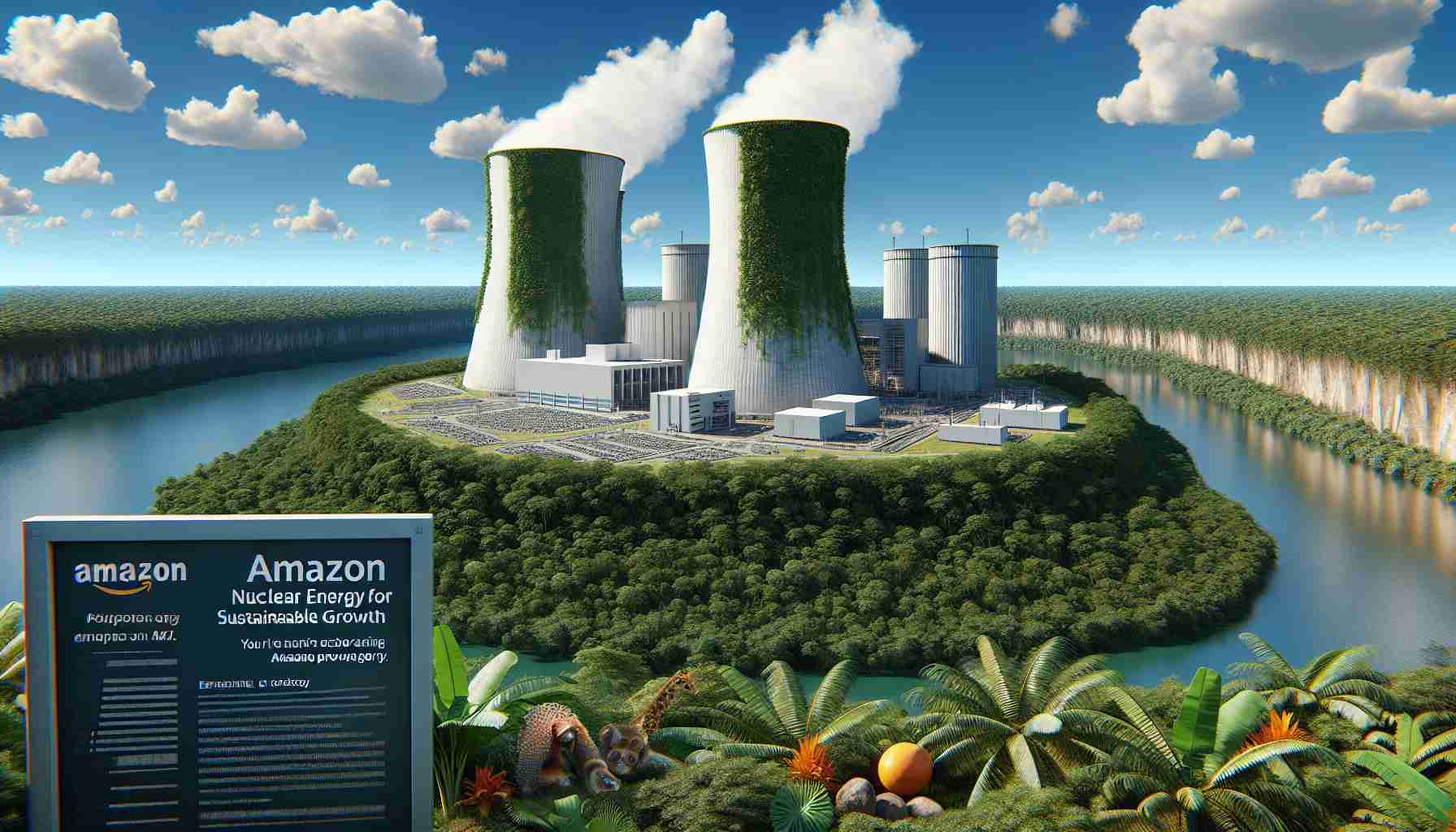In a significant shift towards sustainability, Amazon has announced its commitment to nuclear energy as a means to reduce its carbon footprint. As part of this initiative, the tech giant has secured three agreements focused on the development of Small Modular Reactors (SMRs), reflecting its ambition to harness cleaner energy sources.
Matt Garman, CEO of AWS, highlighted that nuclear energy is both scalable and environmentally friendly. He emphasized that these reactors can provide a safe, carbon-free energy source, essential for powering Amazon’s extensive operations while catering to an increasing customer demand. The company asserts that this venture will not only promote green energy but also generate economic growth in local communities.
In collaboration with Energy Northwest, Amazon aims to establish SMRs capable of producing 320 megawatts, with potential expansion to 960 megawatts. The partnerships also extend to Dominion Energy and X-energy, indicating a multi-faceted approach to energy sourcing.
Amazon is not alone in this pursuit. Its competitors, including Microsoft and Google, are similarly investing in nuclear energy solutions. This strategic pivot can be linked to the rising energy demands driven by the rapid advancement of artificial intelligence technologies, which are exhausting power supply at data centers.
With projections from the International Energy Agency suggesting that AI could substantially increase energy needs, Amazon’s foray into nuclear energy is a response to both environmental responsibilities and business requirements in the evolving tech landscape.
Amazon Embraces Nuclear Energy for Sustainable Growth: A New Frontier in Clean Energy
In its quest for sustainability, Amazon is stepping boldly into the realm of nuclear energy, marking a crucial pivot in its energy strategy. The tech giant is pursuing the development of Small Modular Reactors (SMRs) as part of a broader initiative to minimize its carbon emissions and secure a stable energy supply for its expanding operations.
What motivated Amazon’s shift to nuclear energy?
Amazon’s decision is primarily driven by the need to balance increasing energy demands with its sustainability goals. The rapid growth of cloud computing services and the rising energy requirements of artificial intelligence (AI) have created a pressing need for reliable and clean energy sources. By investing in nuclear power, Amazon aims to position itself as a leader in sustainable technology while ensuring uninterrupted service for its extensive clientele.
Key Questions and Answers:
1. What are Small Modular Reactors (SMRs)?
SMRs are compact nuclear reactors designed to be built off-site and shipped to locations for installation. Their smaller size allows for enhanced safety features and the potential for scalable energy production, addressing both energy security and environmental concerns.
2. How does this initiative impact local communities?
Beyond providing clean energy, Amazon’s nuclear energy projects aim to generate economic opportunities in the regions where these SMRs will be deployed. This includes job creation during construction and operation phases, as well as potential benefits for local infrastructure and services.
3. What are the global implications of Amazon’s move?
Amazon’s embrace of nuclear energy may encourage other corporations to explore similar options, thus potentially accelerating the transition to clean energy globally. This move could influence policies and perceptions around nuclear power, particularly in relation to climate change mitigation.
Advantages of Nuclear Energy for Amazon:
– Low Carbon Emissions: Nuclear energy produces minimal direct greenhouse gas emissions, aligning with Amazon’s goal to reach net-zero carbon by 2040.
– Reliability and Base Load Power: Nuclear power offers a consistent energy supply, crucial for Amazon’s data centers that require uninterrupted energy.
– Long-term Energy Independence: Developing domestic nuclear energy sources can reduce reliance on fluctuating fossil fuel markets.
Disadvantages and Challenges:
– Public Perception and Safety Concerns: Nuclear power can still invoke fear among the public due to incidents like Fukushima and Chernobyl. Overcoming these perceptions will be a challenge.
– Regulatory Hurdles: Navigating the complex regulatory environment associated with nuclear energy can delay projects and increase costs.
– Waste Management Issues: The long-term management of nuclear waste remains a significant concern and requires robust strategies to ensure environmental safety.
Controversies and Key Challenges:
As Amazon forges ahead with its nuclear energy strategy, it might face opposition from environmental groups who argue that investment in nuclear energy diverts resources from renewable energy sources such as wind and solar. Additionally, the inherent risks of nuclear energy production may spark debate about the safety regulations and oversight necessary to protect communities and the environment.
In conclusion, Amazon’s commitment to incorporating nuclear energy into its sustainability plans represents a significant development in the intersection of technology and energy policy. As the company navigates the challenges and opportunities that accompany this ambitious endeavor, its actions may set a pivotal precedent not only for the tech industry but for corporate sustainability efforts worldwide.
For further details on Amazon’s sustainability initiatives, visit Amazon.










